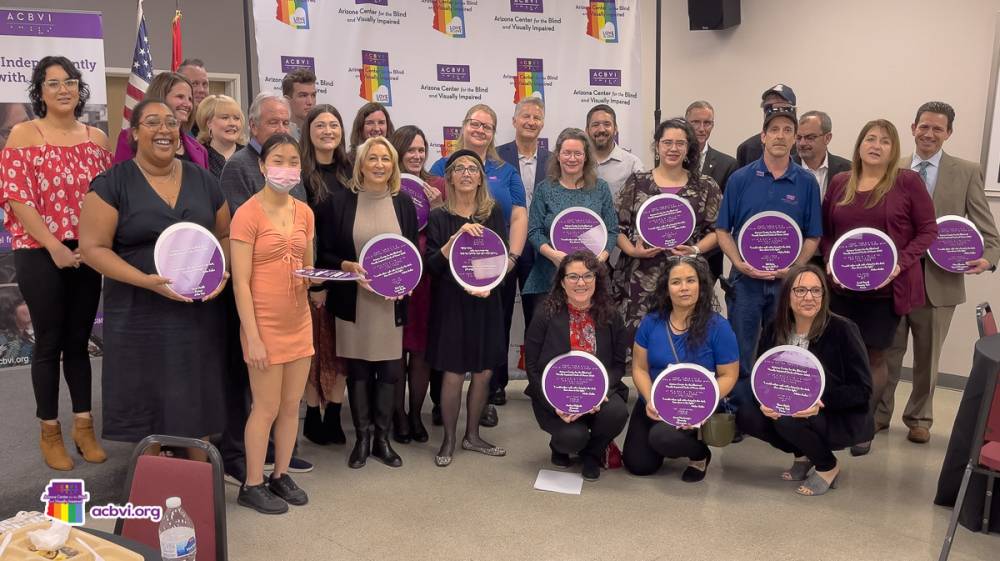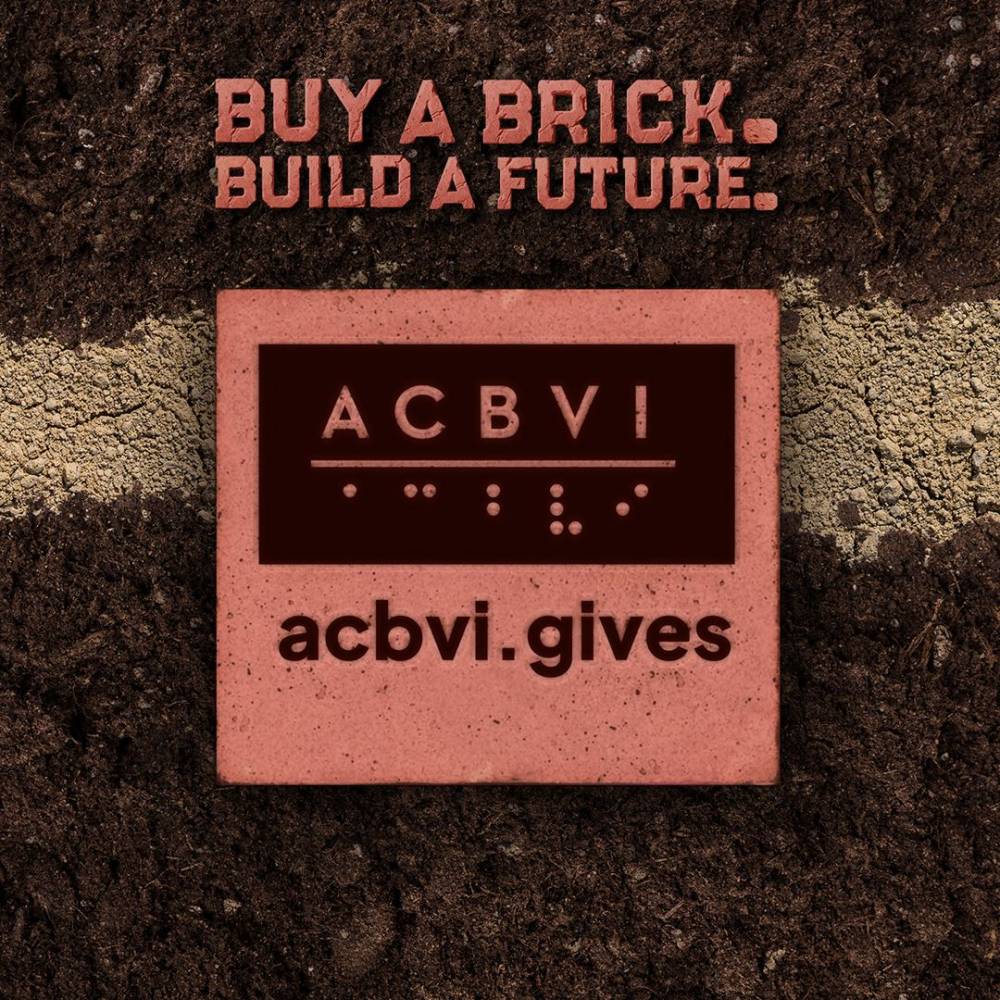Early Beginnings
In 1947, a small group of individuals who were blind and visually impaired began
meeting in each other's homes to learn ways to help each other achieve economic
independence. Training sessions were conducted in piano tuning, and mop and broom
making. These were some of the few "job trades" available to individuals who were
blind during that era. Often over coffee and dessert, individuals would discuss how
they accomplished everyday tasks and would share techniques that had worked for
them. These gatherings became the prototype of today's support groups.
Over time, the number of groups and meeting locations grew. Socialization and
support groups became the focus of activity, while skills training was provided to
individuals, at their request, by a State rehabilitation or "home" teacher. In 1952,
the Coordinating Council of the Blind and the local Maricopa Club established a
central meeting place for all the groups at 232 S. Central Avenue in Phoenix. In
1953, the organization incorporated and hired its first executive director.
Melvin Jones Lions Center
In the early 1960s, when the Phoenix Blind Center building was to be demolished,
local Lions clubs began planning for a permanent facility. By 1961, twenty-eight
Lions clubs had formed a voluntary affiliation, named in honor of Melvin Jones
(founder of Lions International and an Arizona native) to raise funds and identify a
site for a permanent facility for the Phoenix Blind Center. Lion Keith Taylor and
his wife Gladys donated 2.5 acres of land on the northwest corner of 32nd Street and
Roosevelt in Phoenix, the current site of today's Arizona Center for the Blind and
Visually Impaired.
Under the dynamic leadership of Lions Wally Pensinger, Ames Thompson, Bill Lockhart
and Mark Wilson, a growing building fund was generated and voluntary labor recruited
from Lions clubs and labor unions. The original 9,100 square foot building at 3100
E. Roosevelt Street was dedicated by Lions International President, Aubrey Green and
Secretary of the State of Arizona, Wesley Bolen on February 26, 1964.
Expansion of Services
Recognizing the importance of rehabilitation, Executive Director Frank Kells began
working with the State to provide rehabilitation instructional service (adaptive
skills training for daily living) for Center participants and also hired the
Center's first Orientation and Mobility instructor in 1964. Additionally, the Center
started a special aids service, which provided adaptive aids and devices for
individuals who were blind and visually impaired. Although social and recreational
programs remained a major focus of the Center's activities, the client base doubled
over the next five years with the advent of rehabilitation services.
After Frank Kells left the agency in 1969, Allen Woody, formerly a director of
services for the blind in Illinois was hired as executive director in 1971.
The 1970s were a hotbed of activity, with increased funding at the state and federal
levels. During the 1970s Woody obtained federal Independent Living and Older
Americans Act funding, which included transportation funding, thus allowing the
Center to greatly increase both its rehabilitation and social recreation services
delivery.
Further Development
In 1989, the much-loved Woody Allen died. Within the following year after a national
search for his replacement, Jim LaMay filled his position as Executive Director. Mr.
LaMay had previously worked as an Orientation & Mobility instructor in Chicago and
Minneapolis. In Minnesota, he became the Manager of Community Rehabilitation
Services for the Minneapolis Society for the Blind, and later Director of Low Vision
Services for Vision Loss Resources. Mr. LaMay was charged by our Board of Directors
to develop the Center into a state of the art rehabilitation program for adults who
were blind and visually impaired.
Under LaMay’s leadership, strong and abiding relationships were established with
United Way, the Arizona Rehabilitation Services Administration, and private
foundations throughout the Valley. These resources resulted in providing additional
staff and support for additional rehabilitation services, a Low Vision clinic, and
an Assistive Technology center.
As the Center continued to increase its capacity to serve clients, it also
experienced a new growth and development in its Board of Directors. One of its
newest board members, Steve Welker, epitomized the involvement, leadership, and
transformational changes necessary to strengthen the agency.
Community Leadership
Mr. Welker, who had previously been involved in a car accident that resulted in his
becoming totally blind, had received services through the Center which assisted him
in returning to work and later becoming the President of his own insurance company.
His desire to “give back to the agency” resulted in his leadership as a member of
the Board of Directors, Vice-President and finally Chairman of the Board of
Directors. Steve, recognizing the importance of public awareness became a tireless
speaker and presenter regarding the Arizona Center for the Blind and Visually
Impaired. He spearheaded a driving strategic planning process and the need for
remodeling and expansion of the agency’s facilities.
Agency Remodel
In the spring of 2000, under the combined leadership of Steve Welker (Chairman of
the Board of Directors), Rich Mettille (Vice Chair) and Jim LaMay (Executive
Director), and with the help of many donors and friends of the Center, the Arizona
Center for the Blind and Visually Impaired embarked upon a major Capital Campaign.
The success of the Capital Campaign resulted in a completely redesigned,
consolidated and expanded main facility. The new facility allowed the Center to
bring its entire staff - previously housed in two buildings - under one roof,
providing total connectivity of communications and computer functions, greater
economics and efficiencies of administrative functions and facilities management.
Contracts for Innovative Services
ACBVI had long been a proponent of planning a service approach that addresses the
diverse and variety of individual needs presented by vision loss. For this reason,
“comprehensive rehabilitation services” was felt to be the best approach in
addressing these multitudes of needs. Through a Federal and
State Establishment Grant, the agency was able to begin providing a continuum of
services for vocational and educational needs of individuals who are blind and
visually impaired. The success of this establishment grant led to continuing
contracts with the Arizona Rehabilitation Services Administration utilizing this
service delivery system model. Also recognized as a leader in the area of Assistive
Technology and cross disability training, the agency was selected to provide on-site
training for State Rehabilitation Counselors and One-Stop Workforce Centers, and
maintain a website related to Assistive Technology for the state of Arizona. The
agency has also continued national research in Assistive Technology in collaboration
with The National Eye Institute.
Present and Future
Recently ACBVI has taken on a new challenge in developing our Comprehensive
Rehabilitation Program and Vocational Rehabilitation services so that they are
accessible for individuals who are Deafblind and/or possess Combined Vision and
Hearing Loss. A specialized team of instructors who have the expertise and skills
necessary to work with these clients is now available. Through our Strategic
Planning and Long Range Agency plan (utilizing consultation from Bailey Strategic
Group and Lance Strategies), our goal is to create accessibility to all agency
programs and services to this underserved and in many cases unserved population. The
agency also now offers an advanced training program for employment in Assistive
Technology. The program - which is twelve months in duration - leads to entry-level
Information Technology career paths in industry related positions. With our
experience in working with various disabilities, the agency now provides Community
Disability Awareness Training to educate employers, service providers, state
agencies, service organizations and others who are interested in having a better
understanding and awareness of members of their community with disabilities. We
continue to strive to bring about changes in technology and in the community that
will assist in focusing on abilities rather than disabilities.


